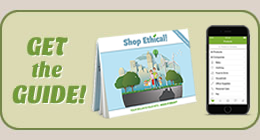Issues > Household & Personal Care > People >
Cleaning Products
Cleaning products, unlike food or personal care products, are not required to display a complete list of ingredients.
Many ingredients may cause skin, eyes and respiratory irritation, asthma, headaches and chemical burns. Others have been associated with more serious long term health concerns such as hormone disruption, neurological disorders and cancer.
However, you can learn something about a product's hazards by reading its label. 'Danger/ Poison' - most hazardous; 'Warning' - moderately hazardous; 'Caution' - slightly toxic. Ingredients vary in the type of health hazard they pose. These include skin or respiratory irritation, watery eyes, or chemical burns, while others are associated with chronic, or long-term, effects such as cancer.
Avoid:
Look for:
chlorine or ammonia, listed as active ingredients
formaldehyde, terpenes, phenols, chlorine, organic mercurials, balsams and aluminium complexes are known to have carcinogenic effects
detergents containing Alkylphenol Ethoxylates (APEs) - do not degrade completely and are known hormone disruptors.
detergents containing phosphates - cause algal blooms in waterways
biodegradable to AS4351, or better still, an international standard
plant-based ingredients, instead of petroleum-based
concentrated form
specific ingredient information such as 'solvent-free', 'no petroleum-based ingredients' rather than unregulated 'greenwash' claims such as 'natural' and 'eco-friendly'
See which cleaning products are most environmentally friendly.



